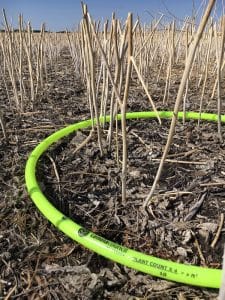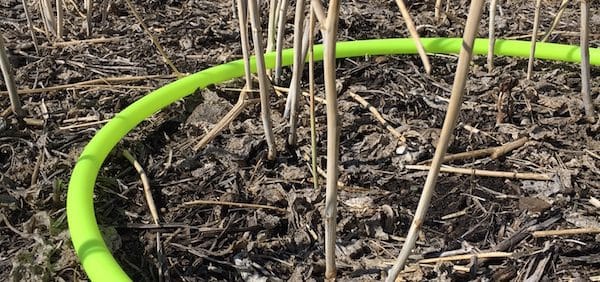Count stubble density in the fall to determine if the final plant population was enough to reach the crop’s yield potential. Canola generally needs a minimum of four to five plants per square foot to reach its yield potential. Read the updated article for HOW to count.

By collecting a few years’ worth of plant stand data and cross referencing it with seeding rates, yield, grade and maturity data for each field, farms can determine their own most economic target stands. Growers may also discover that in some situations (related to seeding date, residue density, etc.) four plants per square foot provide a satisfactory profit while other fields or other years may need a full 10 plants per square foot to satisfy profit and risk management requirements.
Consider maturity and quality as well as yield. Growers may be able to achieve target yields over time with a lower plant density, but thinner stands do produce branchier plants that take longer to mature. This can increase the risk that fall frost will lock in high green counts.
Harvest versus early-season counts. Plant counts often drop 10-15% through the season. If more severe than that, check scouting notes and consider the most likely reasons – Insects? Weather? Disease? – and whether there’s a profit-improving way to prevent this. Seed choice may be part of the solution. If counts increase, which is also possible, take a close look at all plants in the harvest count to see how many are actually contributing to yield. Small spindly plants that emerged well after all the others may not have that many pods, and should not be included in the count.

